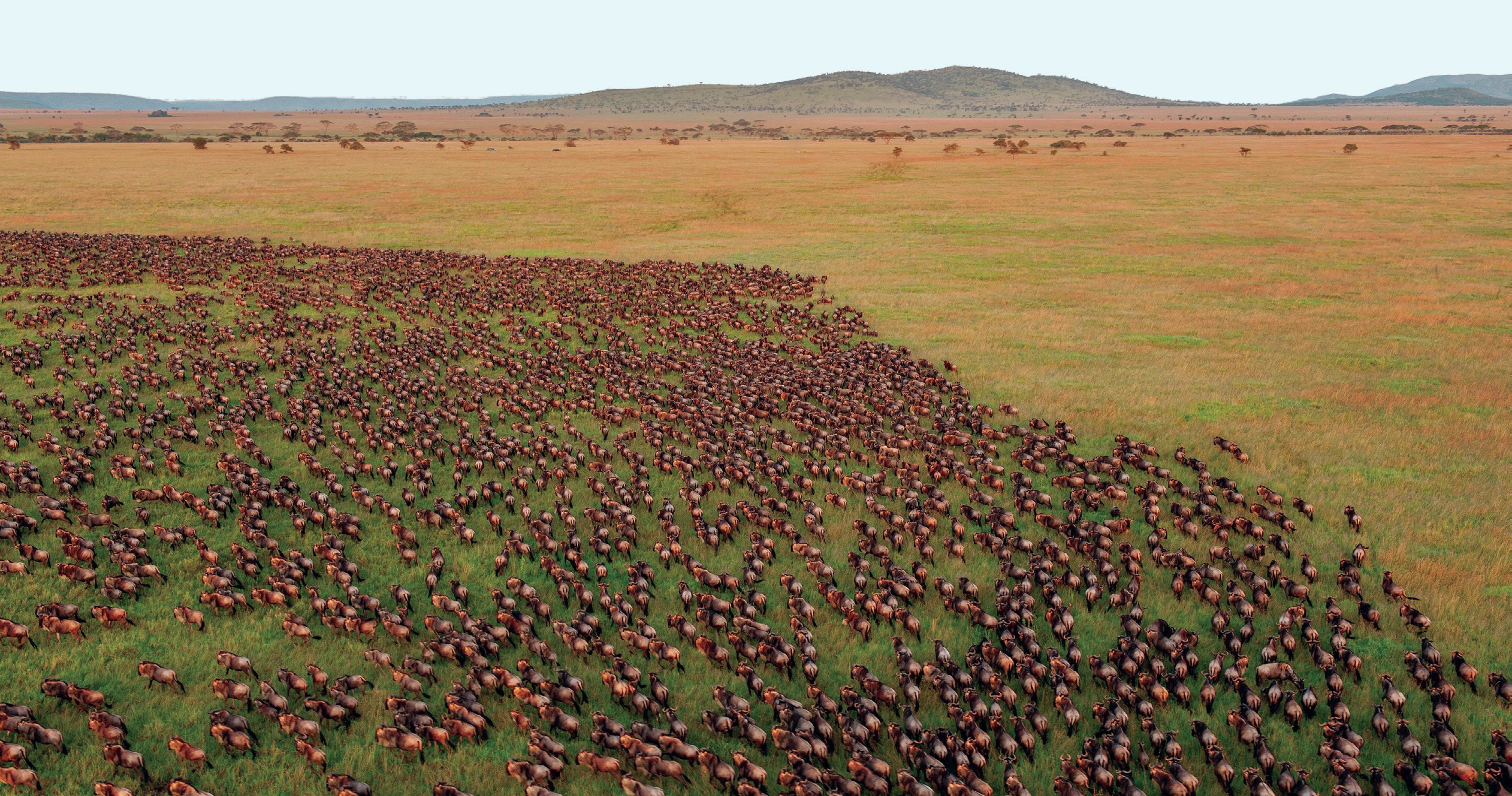
Every year over 1.3 million wildebeest migrate more than 1500 km around the Serengeti ecosystem in East Africa. When the November monsoon rains arrive, the animals start their southward migration to the fertile volcanic grasslands, where the most nutritious grasses are found. During this time, the females give birth to a single calf that is able to stand within 15 minutes and can walk within 1 hour of birth. By May, the monsoons subside and are replaced by intense heat. The grasses and waterholes dry out rapidly and herds are forced back north to the last remaining water in the Mara River.
A herd of 1.3 million wildebeest eats about 4500 tonnes of grass every day, which is why they are constantly forced to move in search of fresh grazing. The wildebeest migration generates an immense amount of dung and urine. This pulse of nutrients leads to rapid growth of insect and other invertebrate populations, which in turn are food for birds, reptiles and small mammals. By eating grass, the wildebeest remove the fuel for wildfires, which allows the trees and shrubs to regenerate, providing food for browsers such as giraffes, elephants and rhinos. The abundance of prey supports an incredibly diverse predator community such as lions, leopards, cheetah, hyena, jackal and small species of mongoose.
Your organisation does not have access to this article.
Sign up today to give your students the edge they need to achieve their best grades with subject expertise
Subscribe




